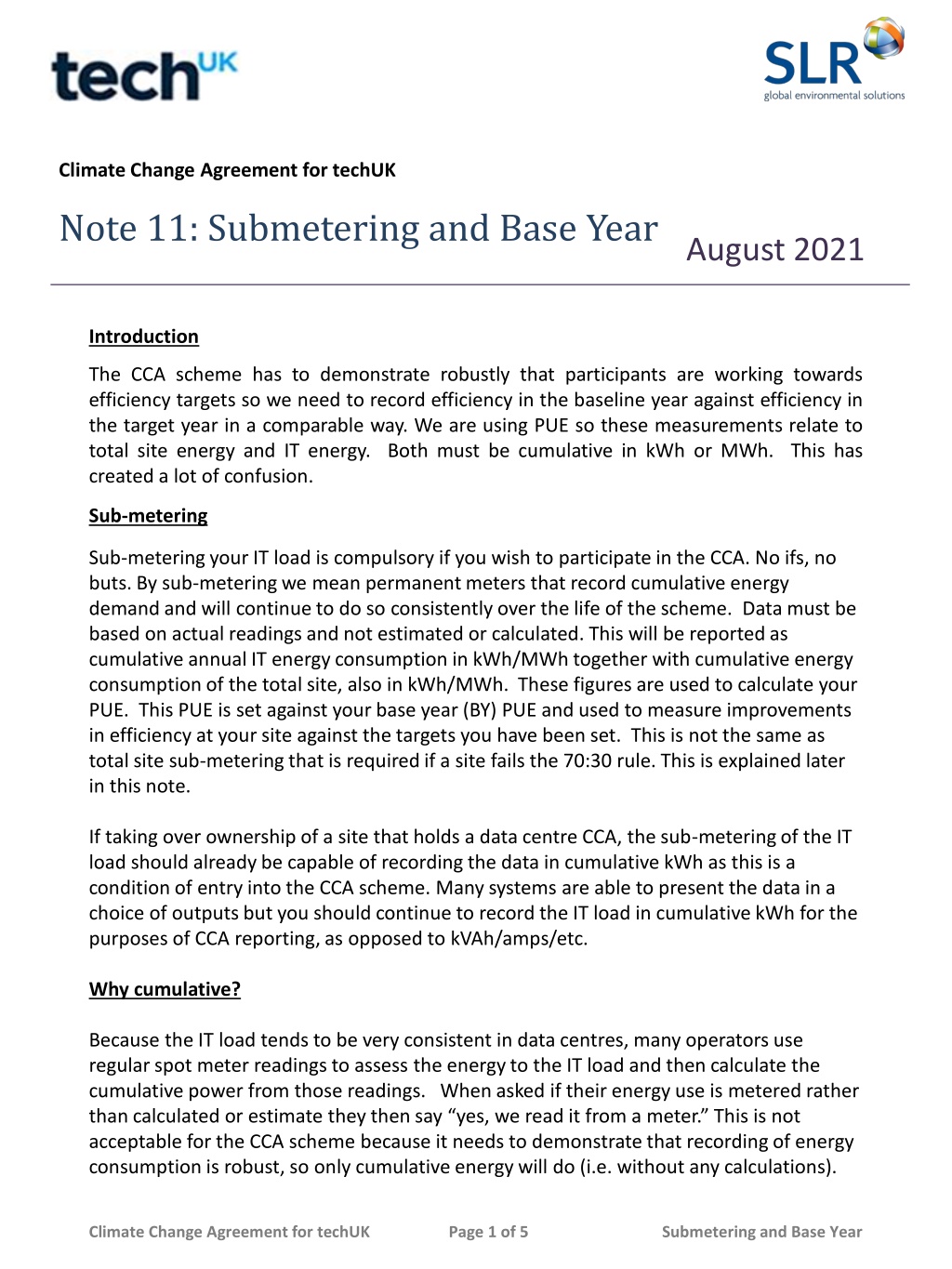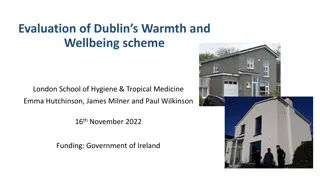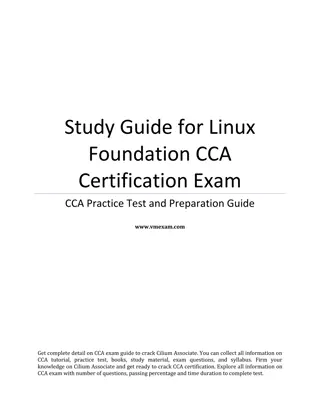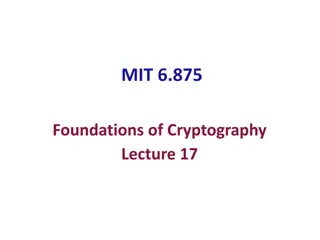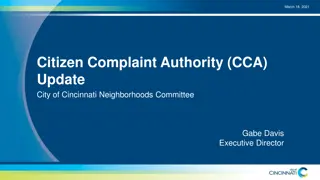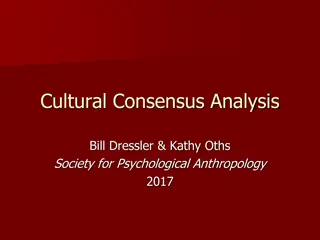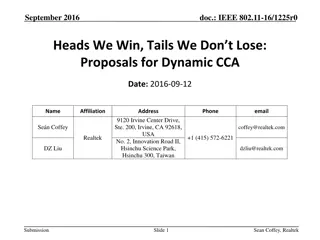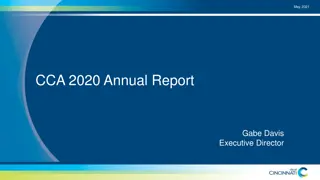CCA Scheme Efficiency Recording Guidelines
The Climate Change Agreement scheme requires robust demonstration of progress towards efficiency targets by comparing baseline and target year efficiencies accurately.
Download Presentation

Please find below an Image/Link to download the presentation.
The content on the website is provided AS IS for your information and personal use only. It may not be sold, licensed, or shared on other websites without obtaining consent from the author.If you encounter any issues during the download, it is possible that the publisher has removed the file from their server.
You are allowed to download the files provided on this website for personal or commercial use, subject to the condition that they are used lawfully. All files are the property of their respective owners.
The content on the website is provided AS IS for your information and personal use only. It may not be sold, licensed, or shared on other websites without obtaining consent from the author.
E N D
Presentation Transcript
Climate Change Agreement for techUK Note 11: Submetering and Base Year August 2021 Introduction The CCA scheme has to demonstrate robustly that participants are working towards efficiency targets so we need to record efficiency in the baseline year against efficiency in the target year in a comparable way. We are using PUE so these measurements relate to total site energy and IT energy. Both must be cumulative in kWh or MWh. This has created a lot of confusion. Sub-metering Sub-metering your IT load is compulsory if you wish to participate in the CCA. No ifs, no buts. By sub-metering we mean permanent meters that record cumulative energy demand and will continue to do so consistently over the life of the scheme. Data must be based on actual readings and not estimated or calculated. This will be reported as cumulative annual IT energy consumption in kWh/MWh together with cumulative energy consumption of the total site, also in kWh/MWh. These figures are used to calculate your PUE. This PUE is set against your base year (BY) PUE and used to measure improvements in efficiency at your site against the targets you have been set. This is not the same as total site sub-metering that is required if a site fails the 70:30 rule. This is explained later in this note. If taking over ownership of a site that holds a data centre CCA, the sub-metering of the IT load should already be capable of recording the data in cumulative kWh as this is a condition of entry into the CCA scheme. Many systems are able to present the data in a choice of outputs but you should continue to record the IT load in cumulative kWh for the purposes of CCA reporting, as opposed to kVAh/amps/etc. Why cumulative? Because the IT load tends to be very consistent in data centres, many operators use regular spot meter readings to assess the energy to the IT load and then calculate the cumulative power from those readings. When asked if their energy use is metered rather than calculated or estimate they then say yes, we read it from a meter. This is not acceptable for the CCA scheme because it needs to demonstrate that recording of energy consumption is robust, so only cumulative energy will do (i.e. without any calculations). Climate Change Agreement for techUK Page 1 of 5 Submetering and Base Year
Base Year You may find that the evidence pack shows that the base year data has IT load values derived from estimated readings as opposed to cumulative continual direct metering. This will have been allowed when the site first joined the scheme as it was not possible for operators to install sub-metering retrospectively. techUK negotiated a concession from the EA relating to base year data only. The EA allowed, on a discretionary basis, data calculated from spot meter readings for sites provided the operators could demonstrate that those readings were regular, were representative and were auditable (i.e. that a record was kept that can be checked). The concession applied only to the base year data and not to ongoing data for target period reporting. The IT energy meter readings for reporting should be taken from the same point throughout the life of the scheme, to provide consistency. The below diagram shows acceptable metering points. If taking over a CCA you should check that you are recording data from the same point as the previous operator. Climate Change Agreement for techUK Page 2 of 5 Submetering and Base Year
CCA PUE Performance for the base year and subsequent reporting is measured as CCAPUE . This differs slightly from the way the industry normally calculates PUE. Industry norm: PUE = (ME power use + IT power use) IT power use CCAs do not follow the Green Grid definitions of PUE, therefore we call the PUE in CCAs the CCAPUE . CCA PUE = Total eligible primary energy use IT eligible primary energy use If the site passes the 70/30 rule this becomes: CCA PUE = [( total site imported electricity x 2.6) + Other fuels consumed on site*] ( IT electricity x 2.6 ) However, to provide base year performance and targets to the degree of accuracy required by the EA for CCA s the IT load is expressed in MWh therefore the above becomes CCA PUE = [( total site imported electricity x 2.6) + Other fuels consumed on site*] [ ( IT electricity x 2.6 )/1000] The average PUE for the sector as a whole was approximately 2.0 in 2013, and in 2018 stood nearer to 1.7. However, allowing for the accuracy adjustment, these values would be expressed as 2000.000 and 1700.000 respectively when calculated as a PUE for CCA purposes *Fuels burnt on site such as generator fuel have a primary factor of 1. In general, other types of fuel substitutes such as CO2 which have different primary factors, are not commonly used in data centres. Sites in UK/EU ETS do not include the fuels covered by the permit in the calculation, either in the base year or for reporting purposes, although CCL discount may still be claimed for these if covered by the CCA and passing the 70/30 rule. Climate Change Agreement for techUK Page 3 of 5 Submetering and Base Year
CCA PUE If the site does not pass the 70/30 rule: CCA PUE = [ ( electricity to the CCA facility x 2.6) + proportion of other fuel to the CCA facility ] [( electricity to the eligible IT x 2.6 )/1000] Sub-metering We previously mentioned sub-metering if failing the 70/30 rule. If you do not pass the 70% eligible threshold you need to be able to accurately record how much energy is eligible for CCL discount. The rules state that ineligible energy should be sub-metered, but this can be by means of exclusion from eligible energy sub-metering, which would already be enabled for most data halls. If halls have mixed eligible and ineligible use, then cooling can be pro-rated however the IT load must be able to be segregated by means of sub- metering. There is an allowance to include up to 3/7ths additional ineligible energy, but this must be separately sub-metered and not go above the 3/7th threshold. If your site fails the 70/30 please contact the helpdesk for assistance and if this a new fail, it also means a variation to your CCA is required. Climate Change Agreement for techUK Page 4 of 5 Submetering and Base Year
For further information please contact SLRs techUK CCA helpdesk: +44 (0)844 800 1880 techUK@slrconsulting.com or visit www.techuk.org/developing-markets/data-centres.html The full suite of techUK CCA Guidance Notes are listed below and can be accessed via contacting the helpdesk or visiting the website. Guidance Note Title 1 What is a CCA 2 Transferring Ownership of a CCA 3 techUK CCA Administration Charges 4 Completing HMRC PP10 and PP11 Forms 5 Timetable of techUK CCA Activities 6 Obligations under your CCA including audits 7 Reporting data at each Target Period 8 How CCAs interact with other schemes 9 Glossary and Abbreviations 10 What happens if... 11 Submetering and base year 12 Measuring Generator Fuel 13 State Aid Transparency reporting 14 Penalties for non compliance 15 Application Documentation 16 Datacentre CCA eligibility Climate Change Agreement for techUK Page 5 of 5 Submetering and Base Year
